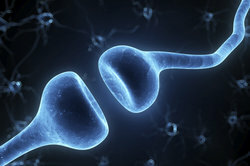Primary and secondary sensory cells
The translation of stimuli within the human body takes place via receptors. In turn, they contain primary and secondary sensory cells, each of which has a specific and just as important role in stimulus transformation.

Stimulus conversion by sensory cells into receptors
- Basically, a receptor is nothing but a bunch of sensory cells. It is the sensory cells that make it possible within the receptor to translate external stimuli into signals within the body.
- A tactile stimulus such as a touch on the skin is converted by the sensory cells into electrical signals, which are coordinated with the Strength of the stimulus in the form of a more or less strong action potential can be directed to the brain so that the person also has the feeling that something is him touched. A touch may initially have a purely sensual effect, but it only really becomes a touch in the mind.
- No sensory cell can convert any kind of stimulus. In fact, every single sensory cell of a living being is designed for a very specific stimulus and can ultimately only convert that into a signal that can be understood by the brain.
The roles of primary and secondary cells
- Depending on their specialization, sensory cells can be differentiated into receptors. One of the main distinctions is that between primary and secondary cells, which ultimately means a distinction according to area of responsibility.
- Primary sensory cells are neurons. These differ from the secondary ones because they are able to generate action potential themselves. The human skin, for example, contains receptors on free nerve endings which, as such, become primary cells are to understand because they direct the stimulus, such as that of touch, as an action potential into the central Manage the nervous system.
- In contrast, secondary sensory cells cannot generate their own action potential, but rely on the secondary ones to transmit a stimulus to the brain. They are connected to the secondary cells via synapses, which means that they transmit the signal to them so that it can be converted and passed on to the central nervous system.
- In addition to distinguishing between secondary and primary, you may want to know how to respond to a stimulus. Phasic cells are used when they transmit a signal only once in response to a sustained stimulus. Tonics, on the other hand, are those that send out an impulse again and again with a constant stimulus.
- Most of the body's sensory cells, however, are a mixture of both and are thus referred to as phasic-tonic. Unlike phasic impulses, their impulse does not drop to zero after a single reaction, but the longer the stimulus lasts, the lower their reaction becomes.
Mechanical stimuli and receptors - explanation of the interaction
Mechanical stimuli trigger an excitation that is passed on through receptors ...
How helpful do you find this article?


